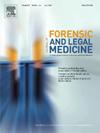Decoding ant activity patterns in a rare anesthetic drug fatality: A case report
IF 1.2
4区 医学
Q3 MEDICINE, LEGAL
引用次数: 0
Abstract
Introduction
Postmortem activity by necrophagous insects, particularly ants, usually produces yellowish, hard, small excoriated skin lesions with serpiginous margins that lack bleeding. However, in rare cases, they can cause extensive bleeding and produce unusual skin lesions, particularly in deaths due to asphyxia, which may raise suspicion of foul play. This can also make it difficult to differentiate between postmortem and antemortem injuries during forensic examinations.
Case presentation
A 26-year-old Indian male anaesthesiology resident was found dead in his hostel room, having allegedly self-administered a lethal dose of propofol following his night shift. The autopsy revealed numerous small, irregular lesions with serpiginous margins and extensive postmortem bleeding on the exposed areas of the body, displaying patterns that were unusual for typical ant activity.
Discussion
The observed bleeding patterns, including droplet, stripe, and pool formations, as well as their combinations, are influenced by factors such as the cause of death, blood fluidity, body position, pooling of blood, and ant species. In this case, these patterns initially raised suspicions of foul play. However, a thorough postmortem examination by expert forensic pathologists, who had prior knowledge of such findings, and the exclusion of any external or internal injuries led to the conclusion that the lesions resulted from postmortem ant activity rather than antemortem trauma.
Conclusion
This case report examines the various patterns and forensic challenges associated with postmortem ant activity in a death caused by asphyxia due to a fatal propofol overdose.
解码蚂蚁活动模式在一个罕见的麻醉药物死亡:一个案例报告
尸食性昆虫,特别是蚂蚁的死后活动,通常产生淡黄色、坚硬、小的剥蚀性皮肤病变,边缘呈蛇形,无出血。然而,在极少数情况下,它们会引起大量出血并产生不寻常的皮肤损伤,特别是在因窒息而死亡的情况下,这可能会引起谋杀的怀疑。这也使得在法医检查时难以区分死后和死前的伤害。一名26岁的印度男性麻醉师被发现死于他的旅馆房间,据称他在夜班后服用了致命剂量的异丙酚。尸检显示,尸体暴露部位有许多小的、不规则的蛇形边缘病变和大量的死后出血,显示出典型蚂蚁活动不寻常的模式。观察到的出血模式,包括液滴、条纹和池状形成及其组合,受死亡原因、血液流动性、体位、血池和蚂蚁种类等因素的影响。在这起案件中,这些模式最初引起了谋杀的怀疑。然而,法医病理学专家对这些发现进行了彻底的尸检,并排除了任何外部或内部损伤,从而得出结论,这些病变是由死后活动造成的,而不是死前创伤。本病例报告探讨了致命异丙酚过量导致的窒息死亡中与死后活动相关的各种模式和法医挑战。
本文章由计算机程序翻译,如有差异,请以英文原文为准。
求助全文
约1分钟内获得全文
求助全文
来源期刊

Journal of forensic and legal medicine
MEDICINE, LEGAL-
CiteScore
2.70
自引率
6.70%
发文量
106
审稿时长
57 days
期刊介绍:
The Journal of Forensic and Legal Medicine publishes topical articles on aspects of forensic and legal medicine. Specifically the Journal supports research that explores the medical principles of care and forensic assessment of individuals, whether adult or child, in contact with the judicial system. It is a fully peer-review hybrid journal with a broad international perspective.
The Journal accepts submissions of original research, review articles, and pertinent case studies, editorials, and commentaries in relevant areas of Forensic and Legal Medicine, Context of Practice, and Education and Training.
The Journal adheres to strict publication ethical guidelines, and actively supports a culture of inclusive and representative publication.
 求助内容:
求助内容: 应助结果提醒方式:
应助结果提醒方式:


